As a payments consultant, I’m always excited to try new ways of paying for things, and I’m always keen to find out what’s new in the payments space. But I recognize that for most of us payments are simply an enabler – a necessary step in getting something we want, and not an end in itself.
While we have come a long way in digital payments, there are still significant hurdles out there that negatively impact millions the world over and need addressing. Earlier this year, I was honored to speak at the Mojaloop Community PI-13 event about the future of digital payments and the impact on the Mojaloop Community. Check out the full talk here, and read on for excerpts and key takeaways from the presentation.
Why Cash?
Since we have access to so many digital means of payment, it is fair to ask why we still have cash. And there are many reasons. First and foremost, cash is interoperable; everyone will accept it. It’s also immediate, with no visible transaction charges. It’s anonymous and anyone can use it. And finally, you always know your balance, even when your phone battery is dead.
But cash also has lots of disadvantages. Paying remotely or sending cash to someone can be quite risky and expensive. Making exact change can be awkward. Handling cash isn’t free – though the cost is borne by a country’s economy, rather than the individual. It can easily be stolen, and for large purchases it’s remarkably bulky.
Exploring Payment Alternatives
So, what would an ideal alternative look like? It must be interoperable, as lack of interoperability is a strong reason for people to stick with cash. It has to be instant and it has to offer face-to-face transactions. It must remain functional offline as well, so it can be used where there’s no connectivity. In these COVID times it needs to be contactless, and it also must support online, remote use.
A viable alternative to cash also has to be very low cost, not just for the individual and for the merchant that’s accepting the payments, but for the economy as a whole. It shouldn’t be dependent on a smartphone or a contactless card, and it must be secure. It also has to be available to everyone in the economy, particularly the underserved and the excluded.
So how do existing payment systems measure up? In a nutshell, nothing is perfect, and more is needed. Security is generally satisfactory, but interoperability remains an issue for many. Instant payments are a problem with payment cards, and costs aren’t low enough.
In my view, ‘availability to the excluded’ is a glaring weakness of many of these payment methods. Existing financial products have been mainly designed by and for the middle class living on a comfortable, regular income – but we can change that. We have the systems and technologies, and we increasingly understand the needs of the excluded.
Identity-Based Payments
Another hot issue these days is identity-based payments: why do we provide bank account details to payers? It should be “pay me,” not “pay my bank account.” It’s none of anybody’s business where I keep my money! So, pay my identity, and I’ll take care of where the money goes, thank you very much.
The Importance of Instant Payments
Instant payments are an important feature for boosting the financial confidence of the underserved because they can then see that the money is transferred immediately, and it supports their budgeting requirements.
And the effect on the retailer can be a vast improvement in their cashflow – orders of magnitude better than alternatives – and richer, more responsive interactions with wholesalers. It fuels a whole B2B e-commerce market and thus contributes to the development and vibrancy of the local economy.
The Relevance for Mojaloop
First, although Mojaloop is not directly connected to the customers and payments, it does support instant transactions, and we should be encouraging the connected Digital Finance Services Providers (DFSPs) to deliver that benefit to their customers.
Importantly for interoperability, Mojaloop doesn’t just redefine money, it also redefines business models. Connecting Microfinance Institutions (MFIs) and banks is the most important element of Mojaloop’s proposition.
Financial Inclusion
For me, interoperability isn’t really about connecting MFIs; it’s about connecting their customers (small businesses and private individuals) into the emerging digital economy.
This is financial inclusion in action. It’s not giving people a wallet; it’s interoperability, it’s connecting everything together. It’s the lubricant for the economy. Mojaloop’s position in the future of payments is centered on working with partners to deliver what customers want and need, to increase inclusion and give them a reason to move away from cash, securely, reliably and efficiently.
For more, check out my full talk on the topic. Connect with us here to join the Mojaloop community, and be sure to follow us on Twitter, LinkedIn and Facebook for all the latest.
Author: Paul Makin, Digital Finance and Identity Consultant, Trouver
